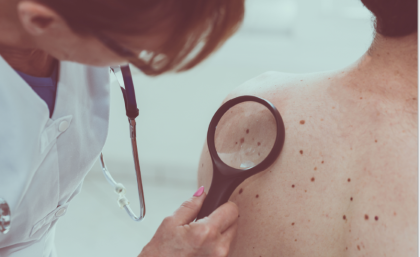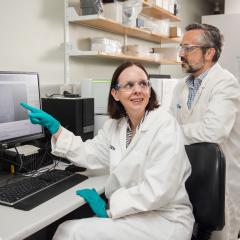
The cost-effectiveness of an online skin cancer screening program is the focus of a new study at The University of Queensland.
Led by UQ School of Pharmacy PhD candidate Centaine Snoswell, the study is the first of its kind to explore the economic impact of teledermoscopy as a viable method of skin cancer triage in Australia.
Teledermoscopy is an electronic referral in which clinical information and digital images of skin lesions are sent to a dermatologist for review via the internet.
Mrs Snoswell said introducing teledermoscopy as a referral method would increase the cost of skin cancer screening, but would reduce the time patients have to wait for diagnosis and treatment.
“Teledermoscopy would increase the cost of screening by approximately $55 per case, but patients would receive their results 26 days earlier,” Mrs Snoswell said.
“Results via teledermoscopy are returned within nine days, compared to 35 days for traditional referrals.
“Although teledermoscopy costs more per referral, there is an incremental cost of $2.10 saved per day.
“Not only does it have the potential to increase the efficiency of care, but also to reduce waiting times and the rate of unnecessary biopsies and specialist referrals.
“In other countries where teledermoscopy referral systems have been implemented, 39 to 88 per cent of patients did not have to attend an in-person consultation with a dermatologist, and were able to be managed by their GP.”
The research team used economic modelling to simulate the cost-effectiveness of a teledermoscopy service in Australia, comparing the costs of digital referral with the current traditional referral process for a patient to be seen by a dermatologist in a clinic.
Skin cancer, or melanoma, accounts for more than 10 per cent of all diagnosed cancers in Australia, with an estimated 13,000 new cases diagnosed in 2016 alone.
The study, co-authored by Professors Liam Caffery and H. Peter Soyer from the UQ Faculty of Medicine, is published in JAMA Dermatology.
Media: Centaine Snoswell, UQ School of Pharmacy, c.snoswell@uq.edu.au or 0437 814 722; Jo Hickman, HaBS Communications, habs.media@uq.edu.au, +61 7 3346 3037.


